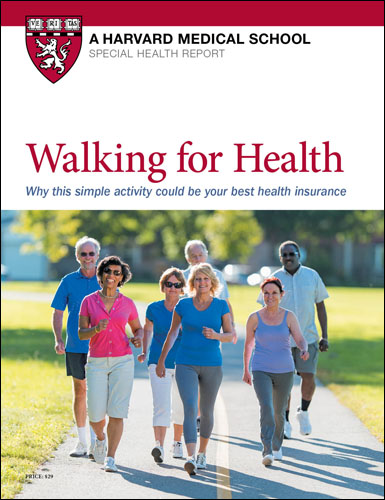Counting steps works as well as counting exercise minutes
News briefs
- Reviewed by Anthony L. Komaroff, MD, Editor in Chief, Harvard Health Letter; Editorial Advisory Board Member, Harvard Health Publishing

Trying to meet physical activity goals can be confusing: should you aim for a certain amount of time exercising or a certain number of steps? A Harvard study suggests that both measurement methods are equally effective at tracking whether you're getting enough activity to reduce disease risk and boost longevity. Researchers analyzed the health information of more than 14,000 healthy women (ages 62 or older) who wore activity trackers for a week and were then followed for nine years. Regardless of the type of exercise they engaged in, women who were the most active had the biggest reductions in risk for cardiovascular disease and early death (30% or more), compared to women who were the least active. And both the minute measurements and step measurements had the same associations with those health benefits. The research was published online May 20, 2024, by JAMA Internal Medicine. Since many people use activity trackers now, the authors say it's time to add step counts to the federal physical activity recommendations, which currently call for 150 minutes per week of moderate-intensity activity or 75 minutes per week of vigorous-intensity activity. The equivalent in steps would be about 7,000 per day.
Image: © RichLegg/Getty Images
About the Author

Heidi Godman, Executive Editor, Harvard Health Letter
About the Reviewer

Anthony L. Komaroff, MD, Editor in Chief, Harvard Health Letter; Editorial Advisory Board Member, Harvard Health Publishing
Disclaimer:
As a service to our readers, Harvard Health Publishing provides access to our library of archived content. Please note the date of last review or update on all articles.
No content on this site, regardless of date, should ever be used as a substitute for direct medical advice from your doctor or other qualified clinician.
















